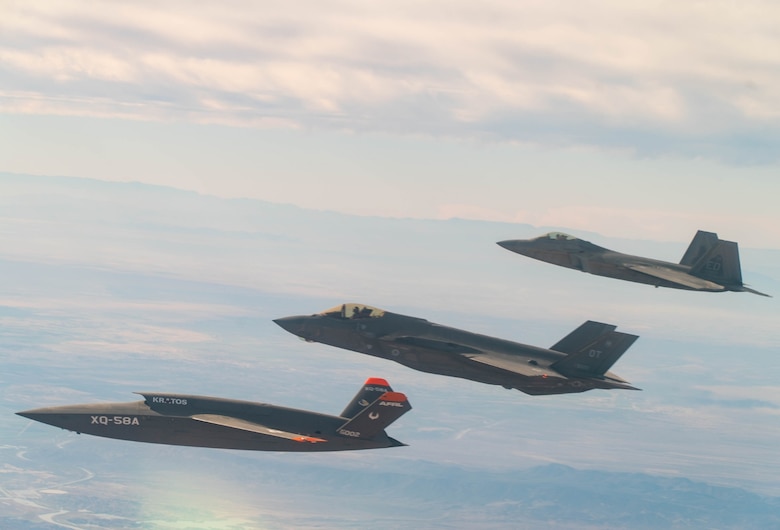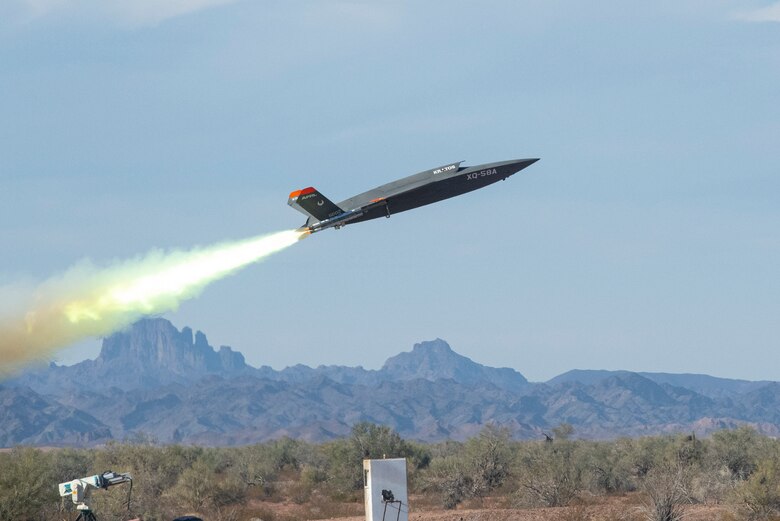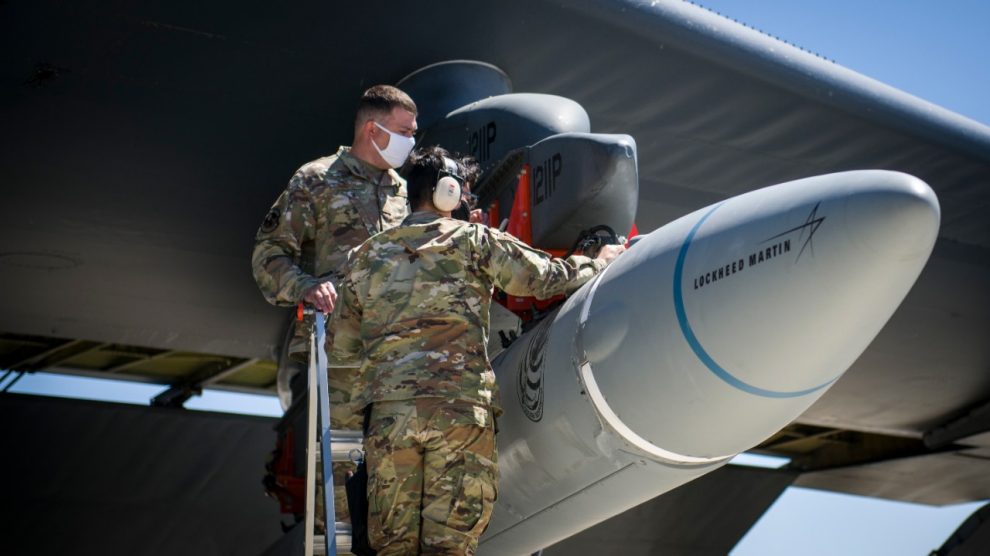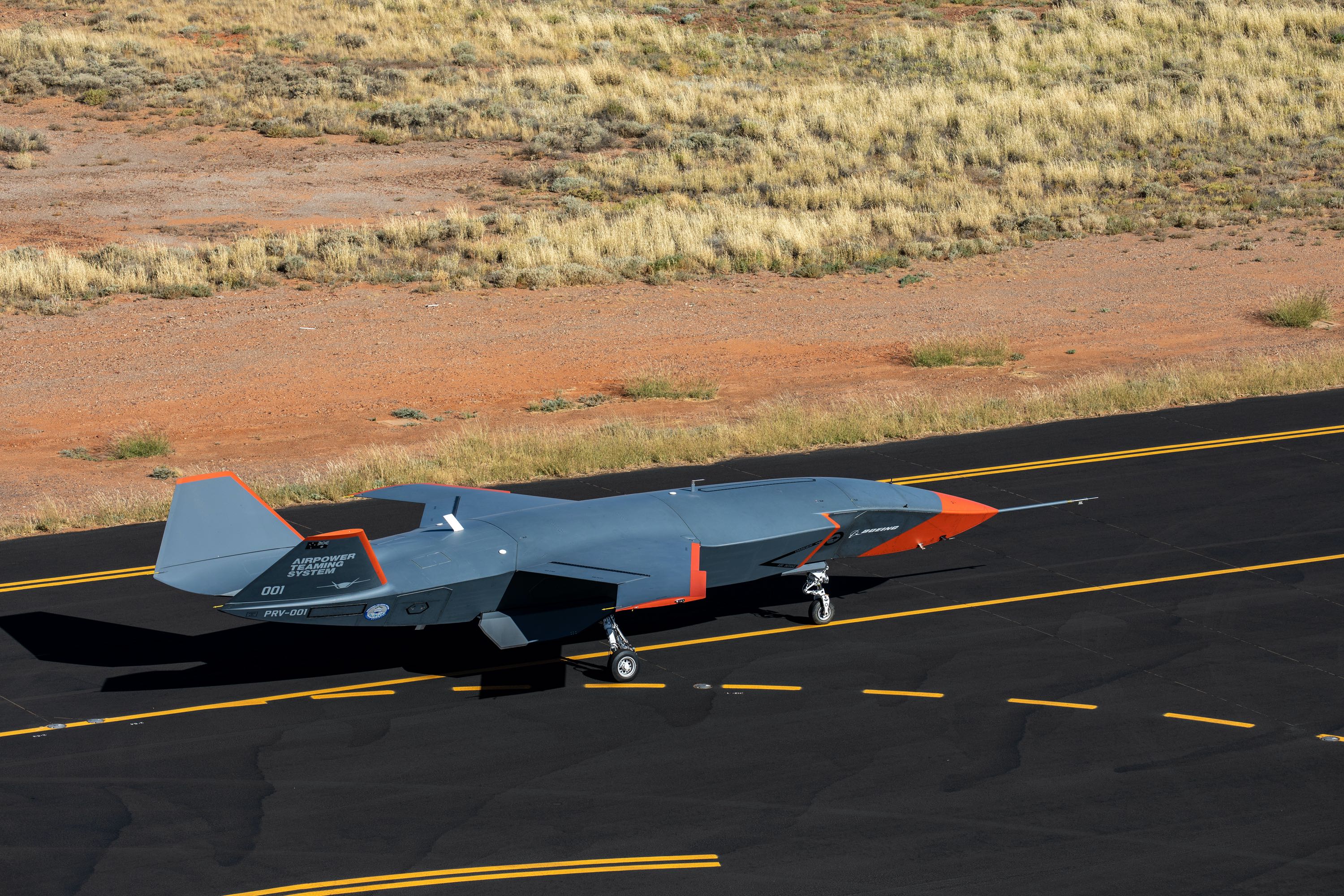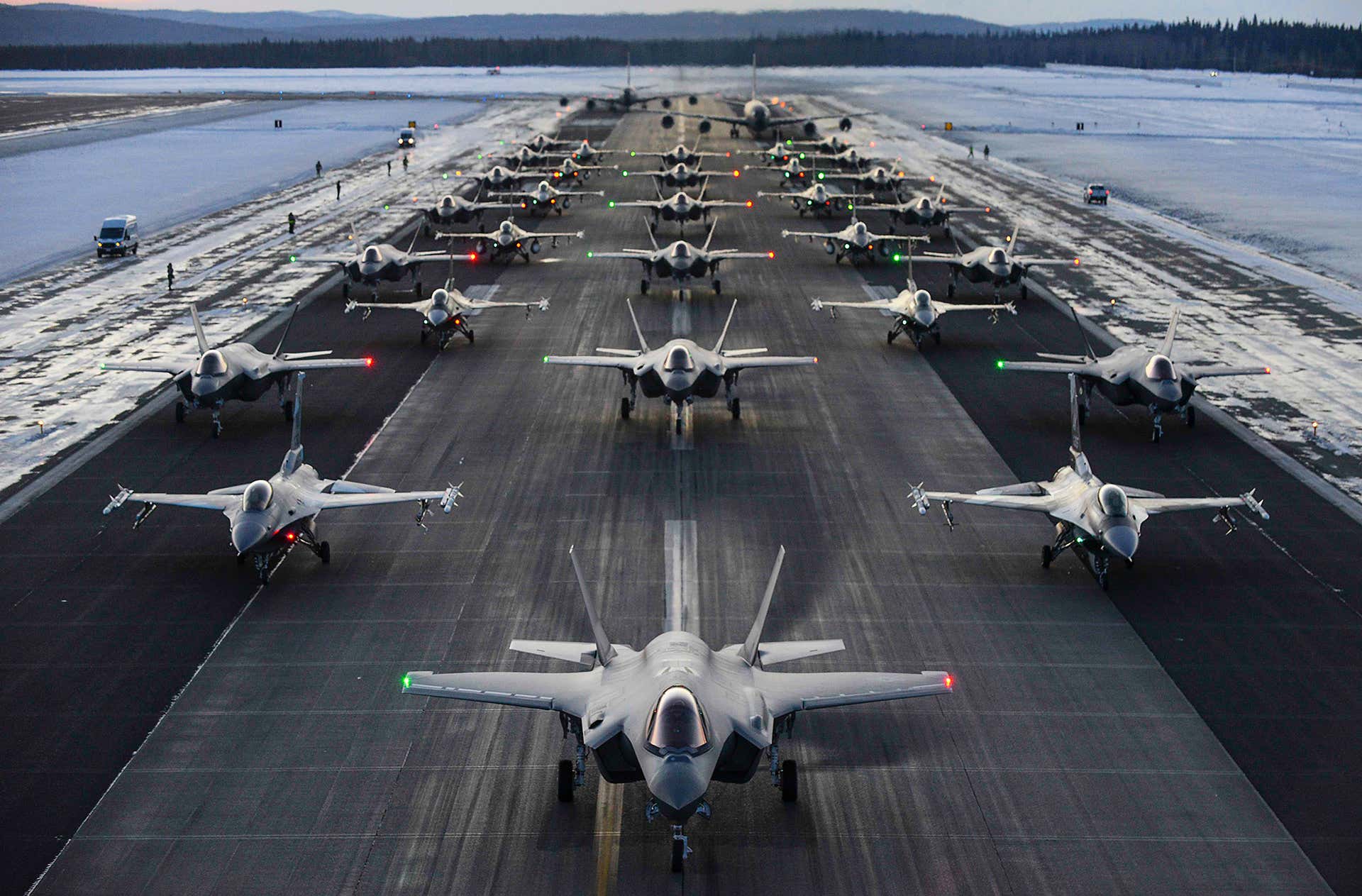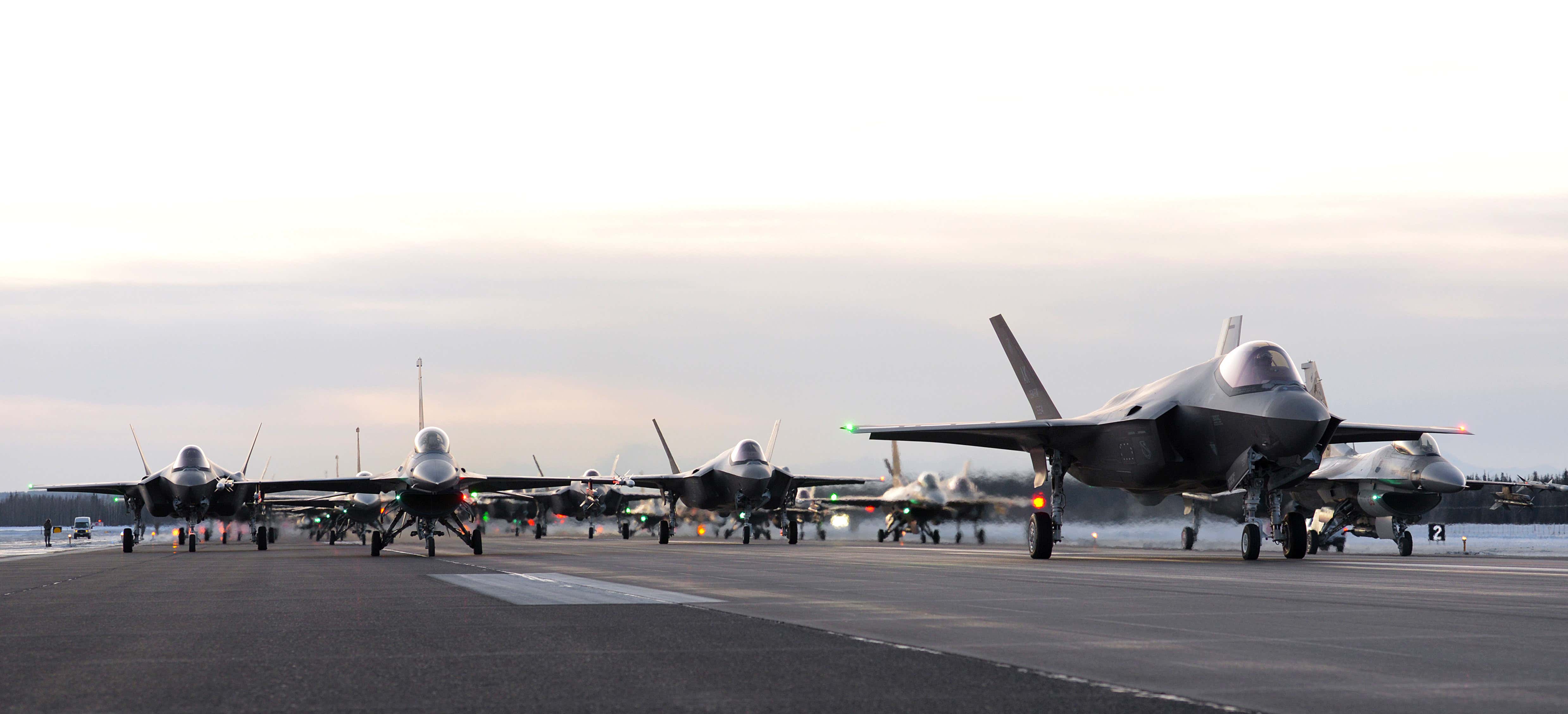Long article on the current US navy thinking on future trainer aircaraft as a complement and ultimate replacement for its T-45. It may end up not requiring carrier take off and landing AT ALL. Possibly EVER. Much like the USAF's plan, they want the trainees to get into their units and types much earlier so they have more time on the type without the overall training time-frame moving to the right.
U.S. Navy is looking at ways that a new jet trainer aircraft could help the service to completely overhaul the way it trains its aviators. The planned successor to the current Boeing T-45 Goshawk could be employed across a number of roles in naval aviation — not just training brand new pilots. But above all else, top Navy officers are looking at how the aircraft could facilitate a totally new approach to the way it trains tactical jet pilots.
Speaking in November, Rear Admiral Gregory “Hyfi” Harris, the Director of the Air Warfare Division within the Office of the Chief of Naval Operations, said the service is talking to industry regarding the potential for a new training aircraft to grow into a multi-role platform as a future adversary, and potentially as a surrogate training aircraft — a move designed to reduce flight hours on expensive-to-operate front line fleet fighter aircraft. Separately, The War Zone understands that the same aircraft could also herald more even significant changes to the Navy's training pipeline than were previously known. In fact, the advent of the new trainer could result in Naval Aviators tackling their very first flight to the aircraft carrier in a front line strike fighter, after they have already earned their coveted 'wings of gold.'
While this sounds like a ludicrous break in deeply established and proven methodology that would outrage naval aviators old and new, based on our investigation, this isn't entirely the case. New technologies and a number of other factors have made such a proposed change not just possible, but probable. Still, there is bound to be major controversy surrounding such a move, especially considering the deeply ingrained aviator-focused culture within the Navy's air arm.
A new training aircraft
In May 2020, the Navy launched its Undergraduate Jet Training System (UJTS) effort, which is ultimately intended to acquire a replacement for the T-45C Goshawk that is currently used in the advanced pilot training role, including the demanding regime of carrier flight operations instruction. A request for information (RFI) was released to industry on May 14, with a view to acquiring a non-developmental, land-based jet trainer by 2028.
The RFI said that rather than being able to land and take-off from the carrier like the current Goshawk and its predecessors, such as the TA-4J Skyhawk, the new trainer would be limited to conducting Field Carrier Landing Practice (FCLP) and shipboard touch-and-go landings. You can read more about the training aircraft program RFI in this past War Zone piece. However, the program is already evolving and The War Zone understands that the Navy is no longer even pursuing the touch-and-go requirement.
In fact, it is understood that the Navy is evaluating the potential implementation of one of the most dramatic changes ever in the way it trains new pilots in the complex art of big deck carrier operations with their associated arresting gear and catapults. Recent advances in technology mean that the Navy’s whole approach to operations from the aircraft carrier could be changing like never before.
A new approach
Until now, U.S. Naval Aviators have been required to fly manual approaches to aircraft carriers, requiring uncompromising levels of skill and competence, with little margin for error. This requires skilled throttle and control column inputs to nurse an aircraft down onto the deck with precision in order to catch one of the arresting wires.
However, the advent of new flight control software has almost done away with the need to wrestle an unforgiving carrier-borne aircraft onto a narrow flight deck. So-called Delta Flight Path (DFP) technology was conceived to help make the F-35C Lightning II far easier to land on an aircraft carrier, even with a pitching and rolling deck. It led to a spin-off program for the F/A-18E/F Super Hornet and EA-18G Growler that is known as Magic Carpet, or PLM — Precision Landing Mode. This too features enhanced flight control logic that is designed to make the carrier landing easier and more predictable for the pilot.
In the case of the Super Hornet, PLM is a mode within the autopilot to enable a much smoother profile on the glideslope, all the way to touchdown. From a piloting perspective, it means a dramatic reduction in control inputs. The resulting effect is a lot more “passes” (successful arrested landings) that are safe and consistent.
Data shows that the boarding rate across air wings has gone up significantly since PLM was introduced. As a result, pure manual flying around the carrier has become far less frequent for strike fighter aviators.
This technology works by Super Hornet and Growler pilots engaging PLM as an autopilot mode and they then fly to a ship-referenced velocity-vector that is projected on the heads-up display (HUD) in the cockpit. A different command logic is also activated within the aircraft's flight control system, which is translated to the aircraft's control surfaces. In effect, the Super Hornet or Growler gains direct lift control via modulating its flaps, which can fine-tune the decent onto the carrier's landing area.
When using the system, the pilots still reference the traditional “Ball” on the carrier deck, and use stick inputs to make sure the aircraft is centered, but the jet will fly to the point on the deck where the velocity-vector is pointed, with the ship-referenced PLM accounting for wind, the fact that the ship is moving, and other factors.
Studies showed that Super Hornet pilots who were flying manually made as many as 300 course corrections in the final 18 seconds of their landing approach to the carrier. With Magic Carpet, even new pilots with no experience had cut that down to around 20 corrections.
In addition to the new flight control software, Navy aircraft can make use of the Instrument Carrier Landing System (ICLS) and the Automatic Carrier Landing System (ACLS) to aid safe recoveries, especially in inclement weather. ACLS uses a dedicated radar on the carrier to provide course correction information, but it reportedly lacks the precision necessary to work by itself in all situations. Indeed, many ACLS-assisted recoveries see the pilot still needing to take control and make the final adjustments before landing. The replacement Joint Precision Approach and Landing Systems (JPALS) uses GPS-enabled position information, and it was first delivered to an operational ship in April 2020.
A revolution in carrier aviation
The addition of this automation has revolutionized the way in which the Navy’s modern strike fighters operate from the carrier deck. The resulting effect is that training pilots in the fine art of cat-and-trap carrier operations, and re-certifying fleet pilots during carrier qualifications (CQ), is able to be dramatically simplified with the use of technology.
The Navy’s two Super Hornet Fleet Replacement Squadrons (FRS) are already carrier qualifying (CQing) new pilots coming to the “Rhino” using PLM, without the need for them to fly manual passes. It marks a seismic change in the overall approach to the training of both new and experienced pilots around the “boat.” It also means that the Navy will no longer place such high emphasis on ingraining the style of manual flying throughout carrier pilot training.
New Naval Aviators destined for carrier operations currently begin their training journey in the T-6 Texan II, before moving to the T-45 Goshawk. It is in this aircraft that they will, from day one, fly in a way that prepares them for carrier ops — their ultimate goal.
Currently, new pilots who are destined for carrier-borne types are required to fly a series of FCLPs at the culmination of nearly every training mission. This involves them using a marked out carrier deck on the airfield's runway and flying a circuit pattern and descent rate and speed that is consistent with how it would be flown for real at the boat. This is designed as part of the building block process towards their initial carrier qualifications in the T-45. This approach to training makes for a prolonged course due to the emphasis on carrier-minded flying from the outset — Goshawk students rarely fly a standard straight-in approach.
Notably, the Goshawk is regarded as being the current inventory’s most challenging jet to fly behind the carrier. This is now even more pronounced due to the new landing aids in the Super Hornet, Growler, and Lightning II, a luxury the T-45 does not possess.
Based on the land-based British Aerospace Hawk jet trainer, the T-45, which was introduced in 1991, was never conceived with the requisite handling characteristics to make carrier approaches easier for the pilot, unlike bespoke carrier aircraft such as the Super Hornet. The T-45 is described by aviators as being underpowered and twitchy during the final approach to the deck — though this certainly helps forge skilled hands.
The advent of technology such as PLM is guiding the Navy towards one of its biggest potential changes in the way it trains new pilots. It is evaluating whether to completely remove carrier qualifications from the advanced pilot training syllabus, and would therefore not require any carrier flying from its follow-on UJTS training aircraft. Strike fighter pilots could instead get their first taste of carrier flying once at their respective Fleet Replacement Squadron (FRS).

